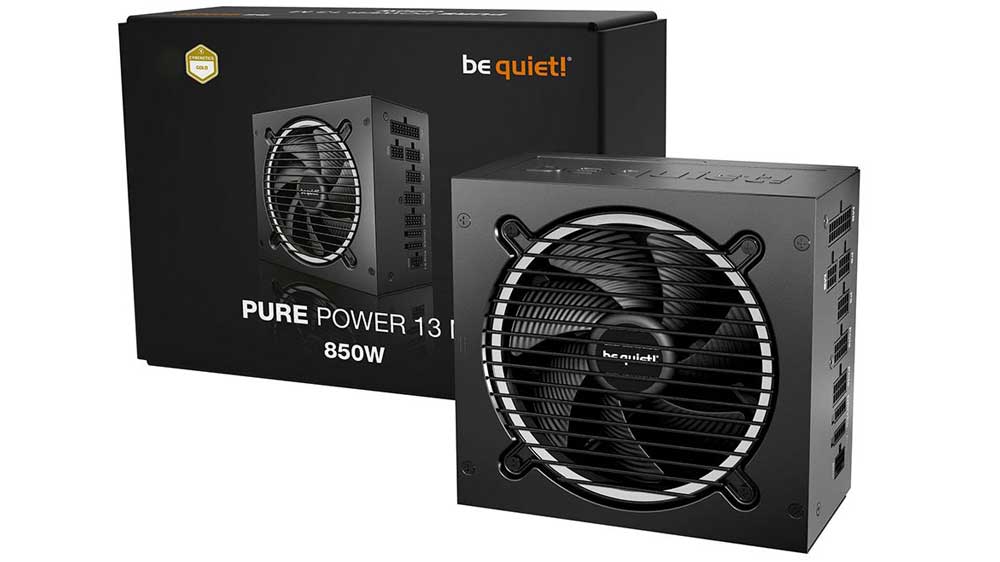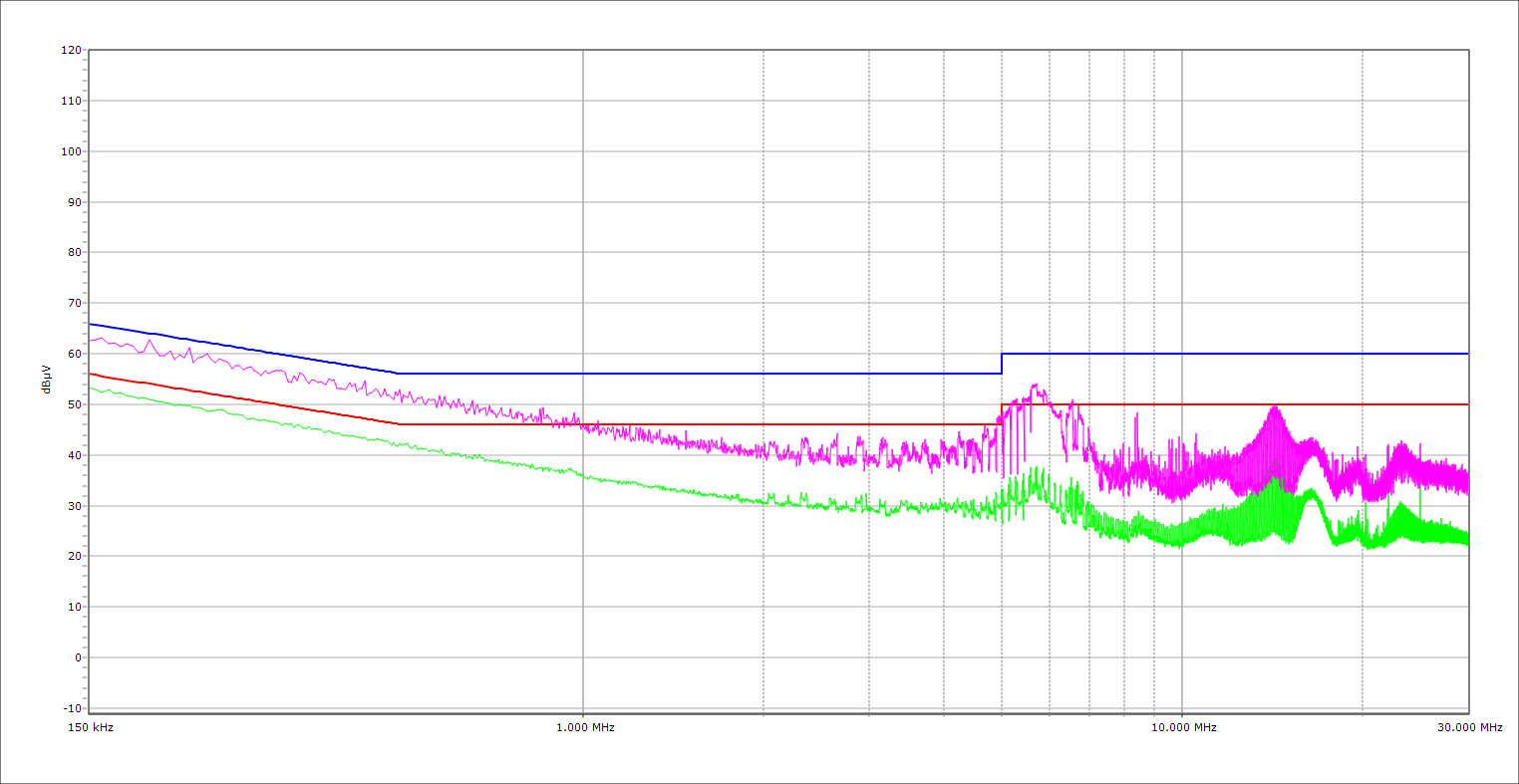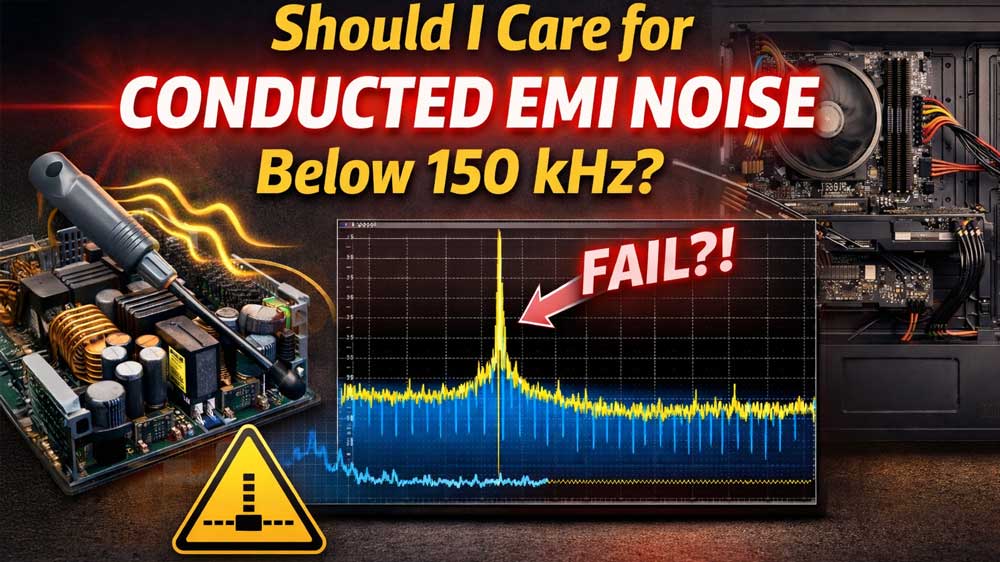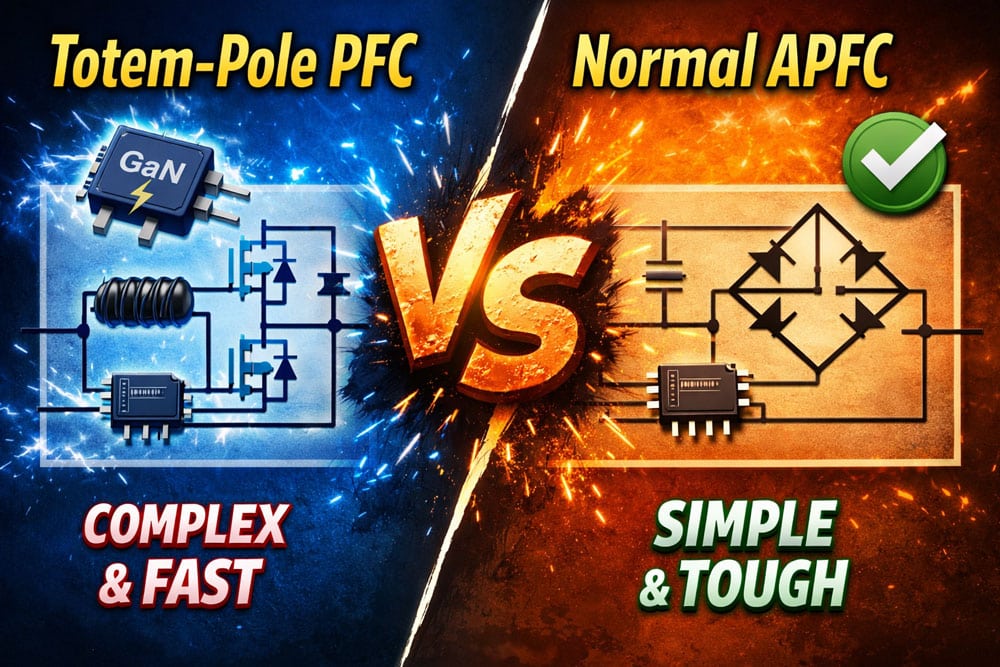Protection Features
| OCP (Normal @ 29.0°C) | 12V: 84.40A (119.04%), 12.075V 5V: 28.8A (130.91%), 4.999V 3.3V: 30.6A (139.09%), 3.285V 5VSB: 3.9A (130.00%), 5.023V |
| OCP (Hot @ 42.9°C) | 12V: 82.20A (115.94%), 12.081V 5V: 28.5A (129.55%), 4.998V 3.3V: 30A (136.36%), 3.285V 5VSB: 3.9A (130.00%), 5.019V |
| OPP (Normal @ 29.5°C) | 1029.66W (121.14%) |
| OPP (Hot @ 41.6°C) | 1009.64W (118.78%) |
| OTP | ✓ (132°C @ Heat Sink) |
| SCP | 12V to Earth: ✓ 5V to Earth: ✓ 3.3V to Earth: ✓ 5VSB to Earth: ✓ -12V to Earth: ✓ |
| PWR_OK | Proper Operation |
| NLO | ✓ |
| Fan Failure Protection | ✗ |
| Conducted Emissions EN55032 & CISPR 32 | ✓ |
| UVP (Full Load @ 90V) | ✓ |
| UVP (No Damage @ 80V) | ✓ |
| SIP | Surge: MOV Inrush: NTC & Bypass Relay |
The 12V rail’s OCP triggering points are conservatively set. The 5V rail doesn’t have highly set OCP triggering points, but this is not the case for the 3.3V rail, which can deliver over 30A. There is no need for such high amperage at 3.3V! Nonetheless, the OCP triggering points are lower under hot conditions than normal ones. Not by a large margin, though. However, this wasn’t the case in the 1000W model, where OCP on the minor rails was set higher at increased operating temperatures!
The over power protection is set correctly, and the rest of the protection features are present, but fan failure protection, which should be standard on every modern PSU platform, is not.
EMC Pre-Compliance at a Glance
Every electronics device, including PSUs, can be an EMI source, which, depending on the amount of EMI emitted, can affect the proper operation of nearby devices. EMI can, in some extreme cases, even render them unusable. Some standards have been established to minimize electromagnetic interference (EMI) noise. The corresponding standards for IT (Information Technology) products are CISPR 32 and its derivative, EN 55032, which applies to products sold in the EU. In the EU, every product bearing the “CE” marking must comply with the EN 55032 standard. CISPR 32 and EN 55032 standards categorize devices into two classes: A and B. Class B equipment is intended for domestic environments. Hence, its permitted EMI emissions are significantly lower than those of A-class devices.
Our equipment for EMI readings:
- Rohde & Schwarz FPC1500 (loaded with all options)
- Tekbox TBLC08 LISN
- Tekbox TBFL1 transient limiter
- Tekbox EMCview software
| CISPR 32 / EN55032 Limits | ||
| CISRP 32 / EN 55032 Class A Conducted EMI Limit | ||
| Frequency of Emission (MHz) | Conducted Limit (dBuV) | |
| Quasi-peak | Average | |
| 0.15 – 0.50 | 79 | 66 |
| 0.50 – 30.0 | 73 | 60 |
| CISPR 32 / EN 55032 Class B Conducted EMI Limit | ||
| Frequency of Emission (MHz) | Conducted Limit (dBuV) | |
| Quasi-peak | Average | |
| 0.15 – 0.50 | 66 – 56 | 56 – 46 |
| 0.50 – 5.00 | 56 | 46 |
| 5.00 – 30.00 | 60 | 50 |
| CISRP 32 / EN 55032 Class A 10-Meter Radiated EMI Limit | ||
| Frequency of Emission (MHz) | Field Strength Limit (dBuV/m) | |
| 30 – 88 | 39 | |
| 88 – 216 | 43.5 | |
| 216 – 960 | 46.5 | |
| > 960 | 49.5 | |
| CISRP 32 / EN 55032 Class B 3-Meter Radiated EMI Limit | ||
| Frequency of Emission (MHz) | Field Strength Limit (dBuV/m) | |
| 30 – 88 | 40 | |
| 88 – 216 | 43.5 | |
| 216 – 960 | 46.0 | |
| > 960 | 54.0 | |
Please note that the ATX spec allows a 4 dB margin for conducted and radiated emissions. This means that if a PSU exceeds the limits but stays within the 4 dB margin, it meets the corresponding ATX spec requirement (8.1 Emissions).
EMI Results
The PSU’s conducted emissions are below the respective limits at both the average and peak EMI detectors.




Hola en las contras pones …
No se necesitan más de 30 A en el riel de 3,3 V (reduzca el punto de activación de OCP correspondiente)
Eso se pued controlar o es solo un comentario…y si se puede como lo podría hacer?, gracias…
The 3.3V rail doesn’t need to be such strong. Contrary to the 5V rail which is heavily utilized by ARGB, among others
I have see reports of units wiht 85C and 105C caps. Do you know what is up with that?
Hi Ari!
I’m looking into a new PSU because of a GPU upgrade. Would you recommend this over the NZXT C850? In my country, they are the same price.
Best regards
It is a very good and newer platform than the NZXT, so I would give it a try.
Cheers, thanks for the reply. I think I’ll go for the ‘be quiet!’ then.
Thank you for the review Ari! Looking forward 550w version of the Pure Power 13M if you can review it in near future. It costs 101,90€ in Europe and probably the best offering at that price range with 10yr warranty for a low power high quality PSU.
I´m coming from Seasonic G-360 (360w) 80 Plus Gold which i bought 1/2015, but for the new system could be wise to change it even though G360 is high quality PSU that in test bench put out 450w before shut down and had high efficiency (90,7% 50% / 88.3% 20%), Japanese 105°C capacitors, very silent ADDA fan etc. I might still get +/- 5 extra years out of this, but if it kills other parts when dying then it gets expensive. I´m hoping to get similar quality for new PSU (reliable, silent, efficient) and don´t need high power version due to opting for modest 6C/12T CPU (65w TDP) and using old GTX 1060 3GB GPU for random gaming, internet and HTPC use. Unless you say to me that i should keep the current one as long it lasts?
I will do it in time. I will review the entire line, I just take it in order of Wattage.
Hi, Which one would you recommend at 850 watts? The corsair rm850x or the be quiet! pure power 13m? I would love to hear your opinion on which one would be a better option! The pricing is the exact same where I live.
Tough choice. Both are very good. I really cannot tell; it’s down to what you want more. I like the Corsair RMx series a lot; it’s among my favorite choices for builds. However, the Pure Power 13m is dead silent, which is not to say the RMx is noisy. Having the same price doesn’t help LOL
Hello, so there is actually no actual difference between both except the noise and sleeved cables (rm850x has them)? In my country the pure power 13 M 850W is like 50 euros cheaper.